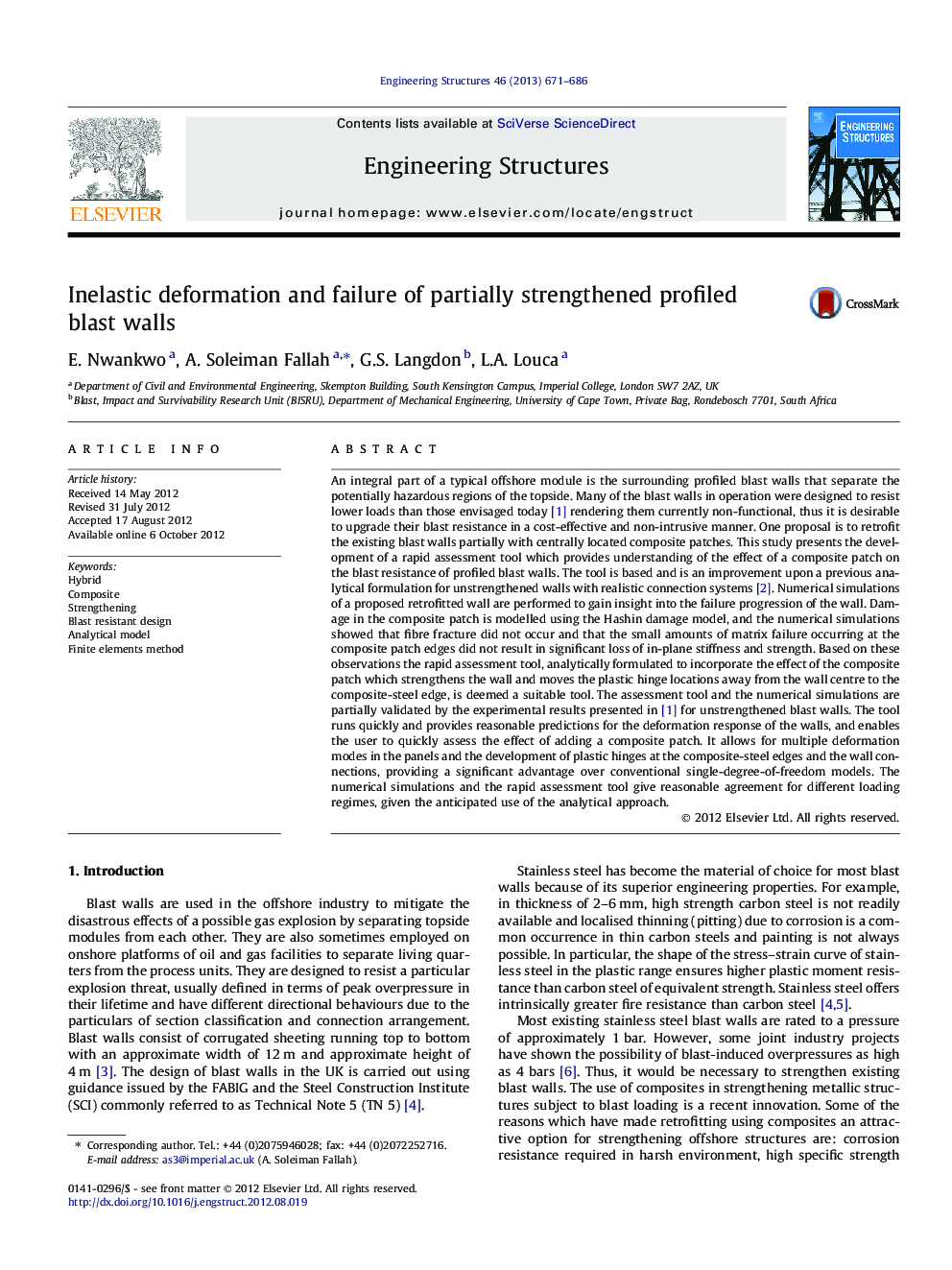| Article ID | Journal | Published Year | Pages | File Type |
|---|---|---|---|---|
| 267359 | Engineering Structures | 2013 | 16 Pages |
An integral part of a typical offshore module is the surrounding profiled blast walls that separate the potentially hazardous regions of the topside. Many of the blast walls in operation were designed to resist lower loads than those envisaged today [1] rendering them currently non-functional, thus it is desirable to upgrade their blast resistance in a cost-effective and non-intrusive manner. One proposal is to retrofit the existing blast walls partially with centrally located composite patches. This study presents the development of a rapid assessment tool which provides understanding of the effect of a composite patch on the blast resistance of profiled blast walls. The tool is based and is an improvement upon a previous analytical formulation for unstrengthened walls with realistic connection systems [2]. Numerical simulations of a proposed retrofitted wall are performed to gain insight into the failure progression of the wall. Damage in the composite patch is modelled using the Hashin damage model, and the numerical simulations showed that fibre fracture did not occur and that the small amounts of matrix failure occurring at the composite patch edges did not result in significant loss of in-plane stiffness and strength. Based on these observations the rapid assessment tool, analytically formulated to incorporate the effect of the composite patch which strengthens the wall and moves the plastic hinge locations away from the wall centre to the composite-steel edge, is deemed a suitable tool. The assessment tool and the numerical simulations are partially validated by the experimental results presented in [1] for unstrengthened blast walls. The tool runs quickly and provides reasonable predictions for the deformation response of the walls, and enables the user to quickly assess the effect of adding a composite patch. It allows for multiple deformation modes in the panels and the development of plastic hinges at the composite-steel edges and the wall connections, providing a significant advantage over conventional single-degree-of-freedom models. The numerical simulations and the rapid assessment tool give reasonable agreement for different loading regimes, given the anticipated use of the analytical approach.
► A blast wall strengthening scheme is proposed using fibre reinforced composites. ► The enhancement scheme is based on partial strengthening of the profiled blast wall. ► Plastic dynamic response is improved due to formation of distinct plastic hinges. ► Analytical model has been corroborated with the corresponding FE results. ► Central deflection and connection strains are abated in a strengthened profile.
